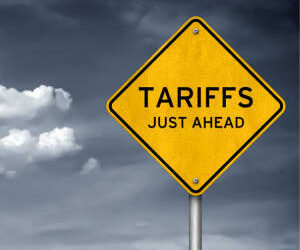Currency speculation is a fickle game, more akin to a casino room than the trading room. Money Management sat down with State Street Global Advisors’ Jonathan Shead to explain how global currency movements affect investment portfolios, and tools to help local investors mitigate risk and take advantage of currency shifts.
ONCE the preserve of freewheeling forex traders, today, everyday investors are feeling the impact of currency shocks a world away.
Ultimately, it is a side effect of investors’ push to diversify and de-risk assets in response to the GFC. Of course, while diversification can temper a volatile global equities market, it also exposes unwitting investors to the vagaries of the foreign exchange.
According to Jonathan Shead, Head of Portfolio Strategies at SSGA, while increased exposure to overseas stocks is a boon for Australian investors, the inherent volatility in global currency adds an additional risk variable to investment portfolios.
“We think it’s a great idea for Australian investors to diversify away from the Australian market, buying companies in the US, Japan, Europe, or in emerging markets; it’s a great way to manage risk in your portfolio,” Shead said. “The problem is that, to invest overseas, you need to get exposure to foreign currencies.”
A volatile exchange can, indeed, prove a mixed blessing for international stock holders. Downward pressure on your local currency can benefit investors in times of home-grown economic instability or
collapse, helping to offset losses during market downturns. Conversely, a strong local currency can erode foreign equity gains.
“Currencies can make you a lot of money, [but] they can also lose you a lot of money, and it’s quite difficult to tell which,” Shead said. “During the financial crisis, for example, foreign currency exposure was a fantastic source of returns as the Australian dollar came under extreme pressure.
“Every time the Australian dollar comes under pressure, you make money by owning foreign currency. But every time the Australian dollar strengthens, that costs you in return; it’s a risk investors should be wary of and manage when investing overseas.”
LOOKING TO THE US
When it comes to tracking their investments, astute currency watchers, unsurprisingly, take their cues from the US.
“The first currency that everyone watches is, of course, the US dollar,” Shead said.
“Given that the US is roughly half of a typical global equity portfolio [for an Australian investor],” the US dollar has a disproportionate impact on total equity returns.
Historically, the US market was seen a safe space for risk-averse Australian investors: exposure to US equities, and thus the US dollar, provided a natural hedge against inherent market volatility. However, as economic and political uncertainty grips North America, the US dollar could very well find itself decoupled from the equities market, and no longer serve as an effective counterweight in periods of economic downturn.
“Typically for Australian investors, having unhedged exposure [lowered the] risk outcome, [removing] some of the equity risk by virtue of the currency exposure investors had. But that’s not necessarily going to hold true forever,” Shead said.
“In an environment where the US might start to react differently to the rest of the world [and] to other economic stimuli, [investors] need to be careful about assuming unhedged currency exposure will reduce [their] total portfolio volatility.”
In light of an increasing unpredictable US administration, Shead cautions against making snap investment decisions based on US dollar valuations.
“[Making] short-term calls on a currency like the US dollar is notoriously difficult to do; it takes a huge amount of skill.” Rather, he urges investors to adopt a long-term approach and to consider currency hedging on US held stock.
Indeed, after a decade of interminable fluctuation for the ‘Aussie’ – trading below $A0.50 in 2001 to as high as $A1.10 in 2011 – now is “the perfect time for investors to set their currency strategies,” Shead said.
What is more, with the Australian dollar currently “sitting near fair value against the US”, Shead believes now is an ideal opportunity for local investors to revise US currency exposures.
Of course, while the weight of US stocks bears heavy on Australian portfolios, the other half of investors’ foreign asset pool – spread across Japan, Europe, the UK, or in emerging markets – presents a markedly different case.
“The story there is not quite the same as the US dollar,” said Shead. “At the moment, our long-term valuation models suggest that some of those currencies are a little bit cheaper than the Australian dollar at the moment.”
Long-term investors exposed to the Yen, the Euro or the Sterling should therefore be less inclined to hedge those currencies – at least for the moment.
IN FOR THE LONG TERM
While it is tempting to react to short-term shocks, when it comes to currency, Shead urges investors to adopt a measured, long-term approach.
“If you trace every two cent move in the Australian dollar, you’ll be trading three times a week” – an unrealistic burden for most investors. He advises investors to hold off during periods of significant currency shifts, and to “take their time” setting a new exposure position.
“We think that most investors will do pretty well if they look at long-term valuations, Shead said. “We suggest that investors set a minimum amount of currency exposure and a maximum amount and then manage through that range on a long-term basis.”
Where unhedged investments were once a safe bet for US stocks, currency volatility could prove “more of problem for Australian investors going forward than it has in the past,” he said.
“In that kind of environment, it’s quite possible foreign currency exposure may start to increase the risk of your global equity portfolio, and we think hedging may start to be more important for Australian investors.”
HEDGING YOUR BETS
Historically, managed investment schemes were one of the few investment options that offered direct control over one’s currency exposure, providing a simple choice between hedged or unhedged versions of a product.
The advent of exchange traded funds (EFTs) has opened the playing field for currency-savvy investors, not only offering a prime mechanism to access diversified foreign investments, but an accessible means for investors to fine-tune currency hedging to meet changing market conditions.
“[There are] ETFs today [that] have hedging built into the fund itself,” Shead said. “You can buy ETFs where the currency exposure is hedged or unhedged – it is very easily trade between those two to manage your foreign currency exposure.”
The flexibility and adaptability of ETFs makes them an ideal investment vehicle for managing currency risk exposures.
“The hedged ETF can be used to adjust your total currency exposure, so if you have a high dividend ETF, or you have a REITs ETF, you can use the hedged [Global Equity] ETF to get the total [portfolio] exposure just right.”
To learn more about the benefits of diversifying offshore with SPDR ETFs, visit spdrs.com.au





